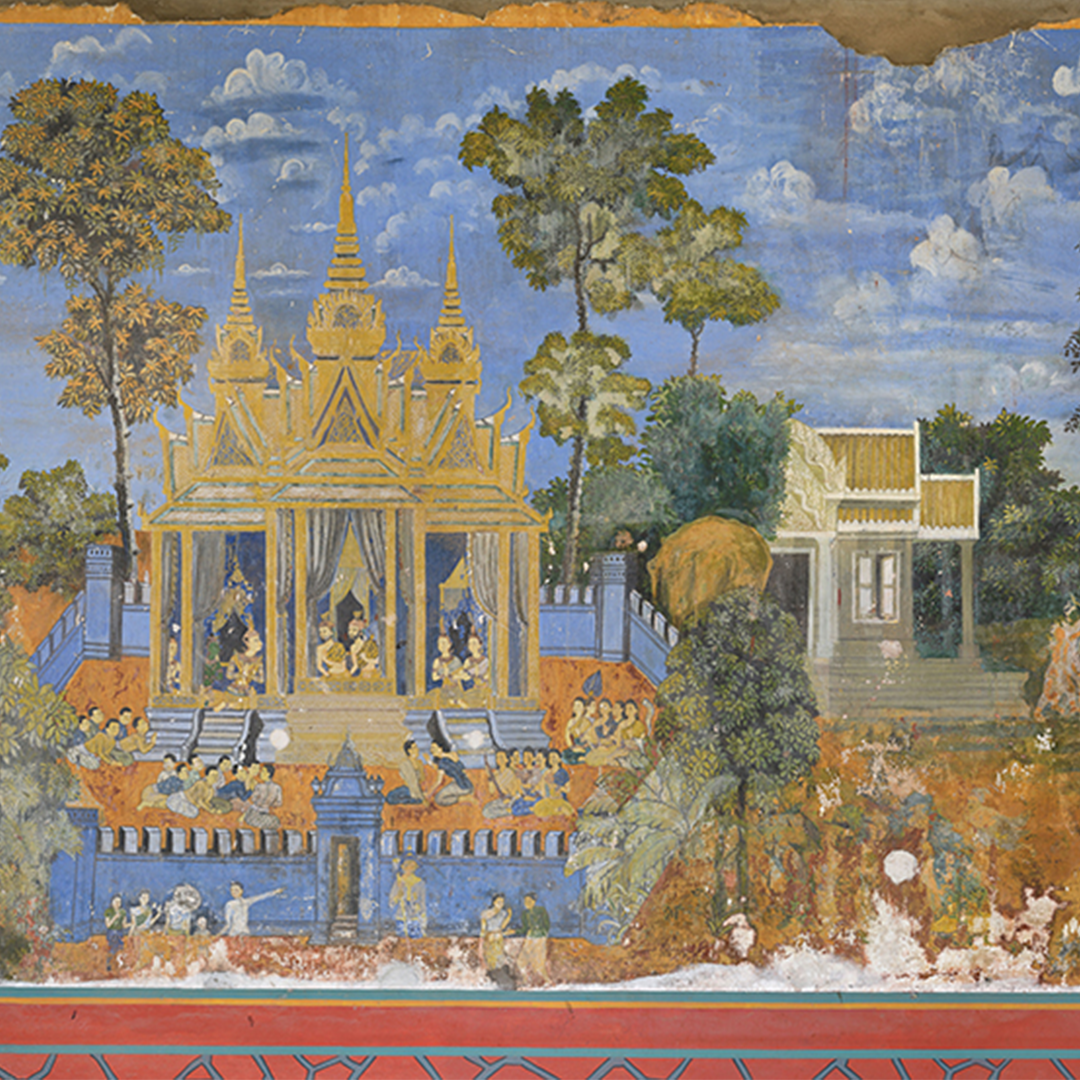
The Silver Pagoda is an impressively ornate structure, also known as Wat Preah Keo, or ‘Temple of the Emerald Buddha’, located inside the Royal Palace of Phnom Penh. Originally built as a wooden construction in 1892 under King Norodom, it was rebuilt in its current state in 1962. It stands inside a large, enclosed complex, surrounded by a painted gallery on all four sides with a dominant canopy at the top and a sloping roof, forming a cloister.
One of the striking features is a series of Buddhist murals, painted by students at the beginning of the 20th Century. Oknha Tep Nimit Mak was the painter and master builder of the Palace at the end of the 19th century and the beginning of the 20th century. The courtyard, surrounded by galleries, has the shape of a rectangle of 150 m by 170 m, the murals occupy the entire surface of the walls, they are 3.50 meters high and 604 meters long, making them the largest wall paintings in Southeast Asia. Opus Instrument’s friends at Arcanes in Paris have assessed the damage with our solutions, ready for a lengthy restoration project in 2024.
In this enclosure of traditional art, one can see the whole Rama story unfold…
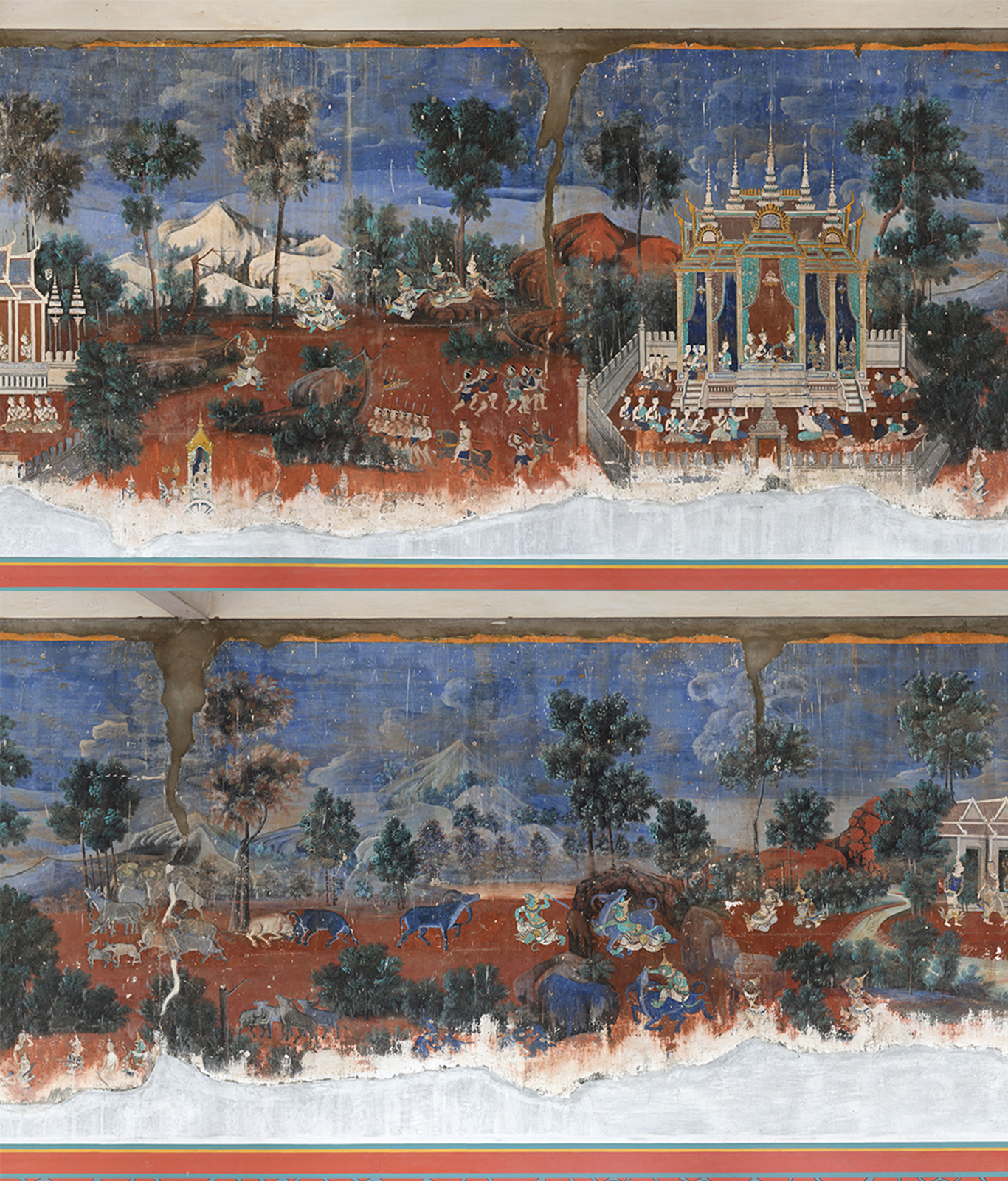
Mural in the galleries of the Silver Pagoda (Pre-assessment)
No frame, no division, not even a stripe, separates the scenes. The transitions between two episodes are made in an elegant, more elaborate way, by a grove, a group of rocks, or, simply, by the attitude of characters directing their attention towards specific elements of the scene. Except for a few flashbacks, the story is laid out in a chronological order, with succinct inscriptions in Khmer describing the action.
These paintings, so precious, bear witness to the enduring artistic sense of the Khmer people.
The murals in the galleries of the Silver Pagoda were executed by the painter and architect Oknha Tep Nimit Thak, assisted by painter Vichitre Chea and a team of 40 students, thus making it very difficult to correctly attribute the different parts of these works.
The underlying drawings of the Silver Pagoda are very rich and bear witness to the artist’s vision and creative process at the time of painting. Reflectography has revealed adjustments made by the artist during the painting process.
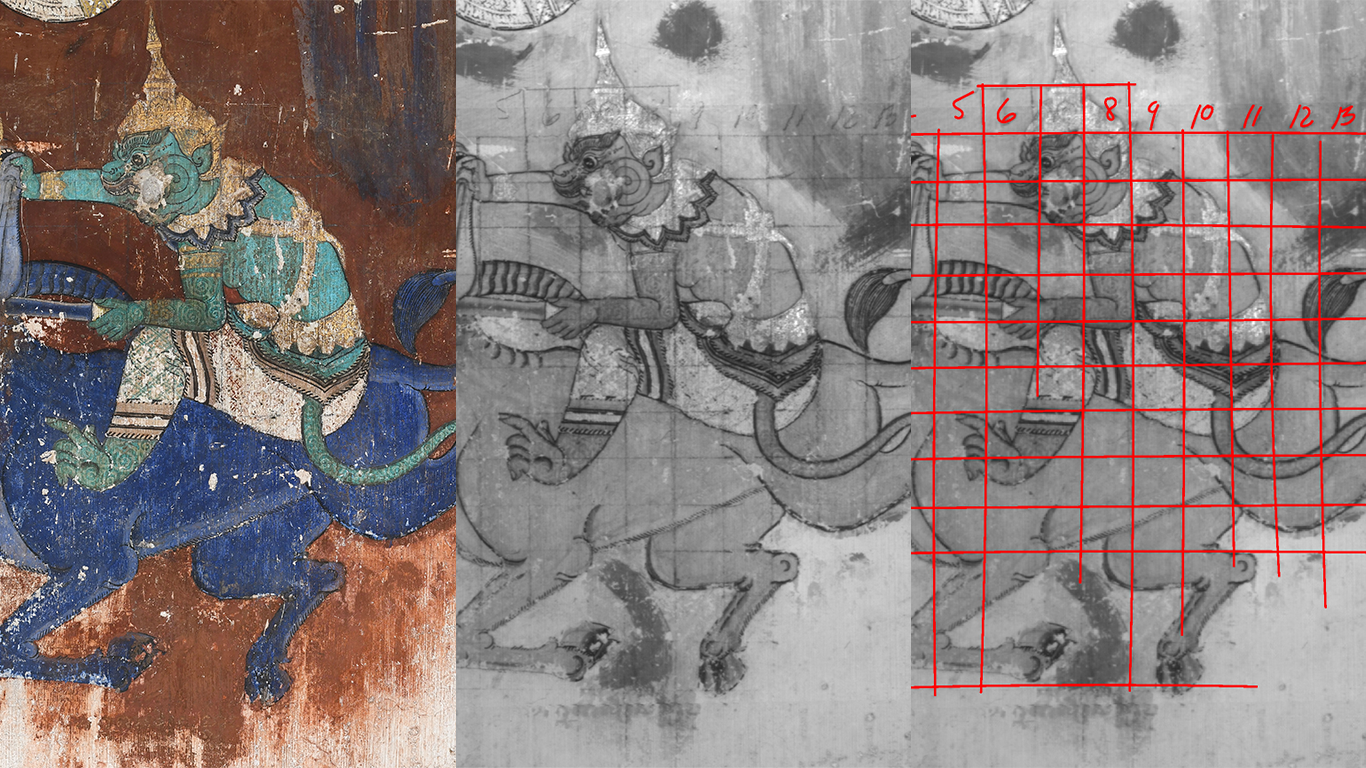
Grid drawing method revealed with French numbers. Object of high interest for archaeological & historical discoveries.
For the first time in their history, the painted murals of the Silver Pagoda were studied extensively through several non-invasive analyses, including infrared reflectography images (IR) acquired with Opus Instruments’s Osiris camera, allowing for the study of the work’s genesis and underlying layers.
The most repainted part (eastern wall) underwent the most modifications and changes: the architecture, decorations and characters have been simplified; the lines are less delicate, some characters are repositioned or simply created new. This tells us that a new group of artists worked on this part of the wall after the completion of the project or after the damage that the original painting may have suffered.
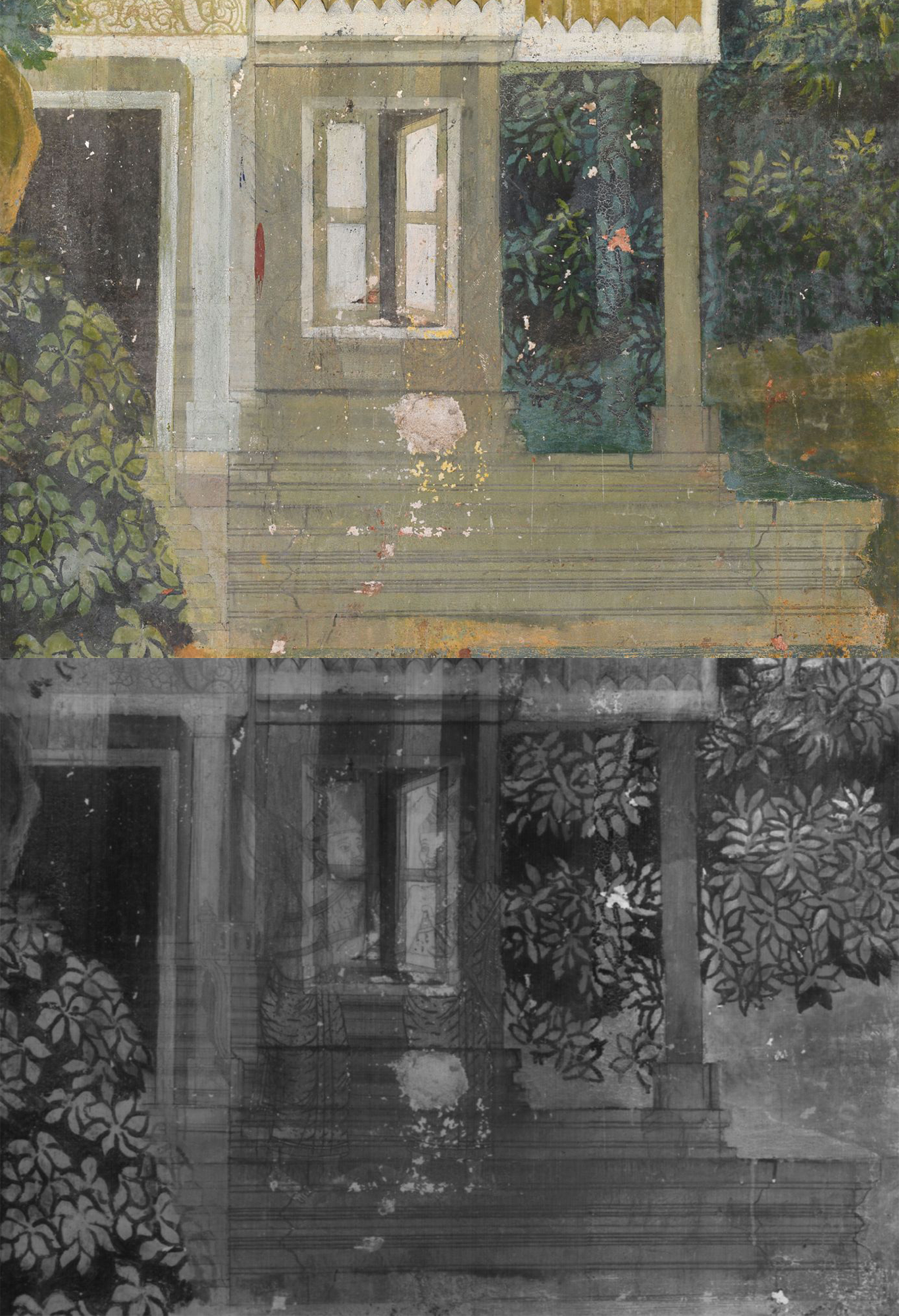
Underdrawings character visible with infrared camera
On the whole composition, we observe:
– Numerous compositional changes in the architecture
– Removal of some characters: some characters or groups of characters disappear in the painted phase, especially on the repainted part where the modifications are the most obvious
– Slight displacements, especially for characters and animals: adjustment of the positions of figures – feet position, arms position, architectural details
– Squaring: to place groups of characters (often duos)
– Drawing of lines for inscriptions
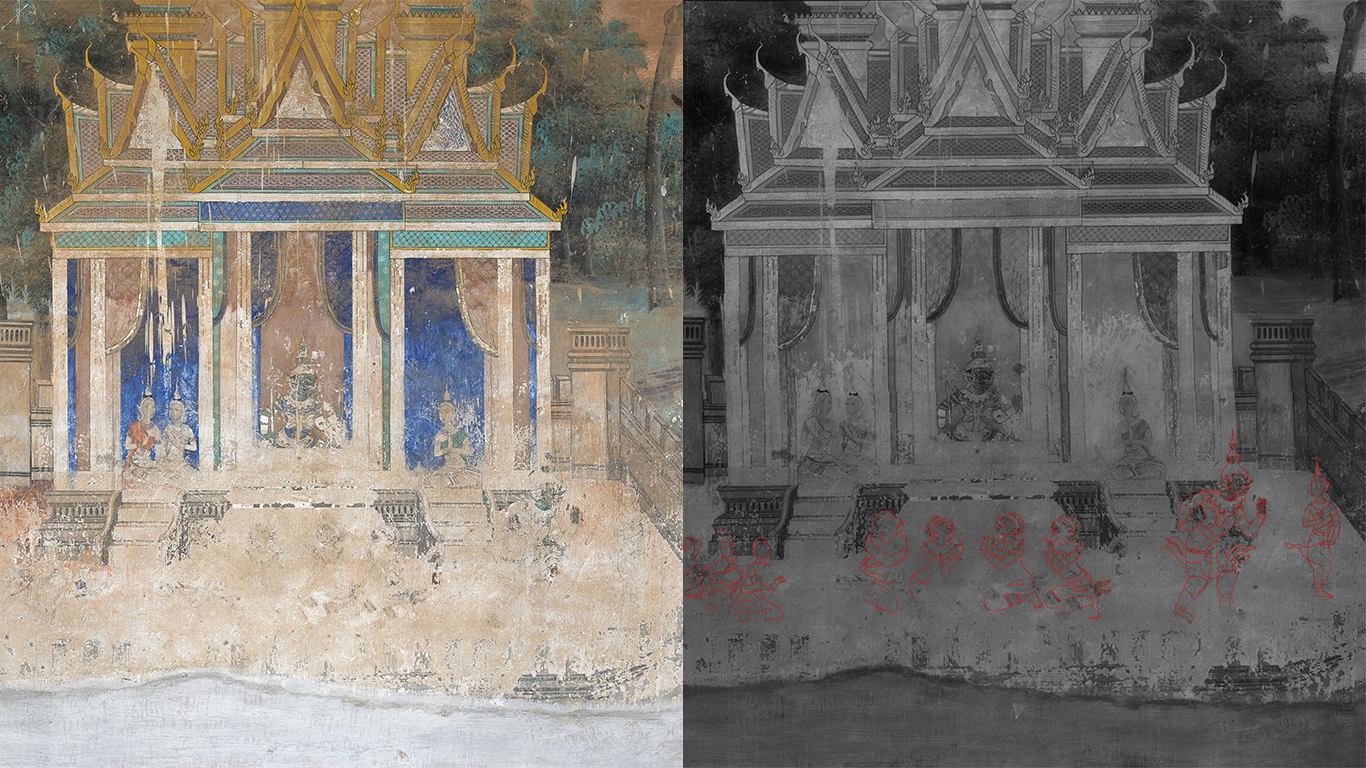
Further characters revealed to be restored; underdrawings of position changes and decision-making visible
Reflectography also allowed us to determine the missing drawing on the very damaged areas of the mural. Indeed, some parts have been altered by time, environment, weather changes and deliberate damage by visitors. The reflectography thus allowed to better understand the scenes represented.
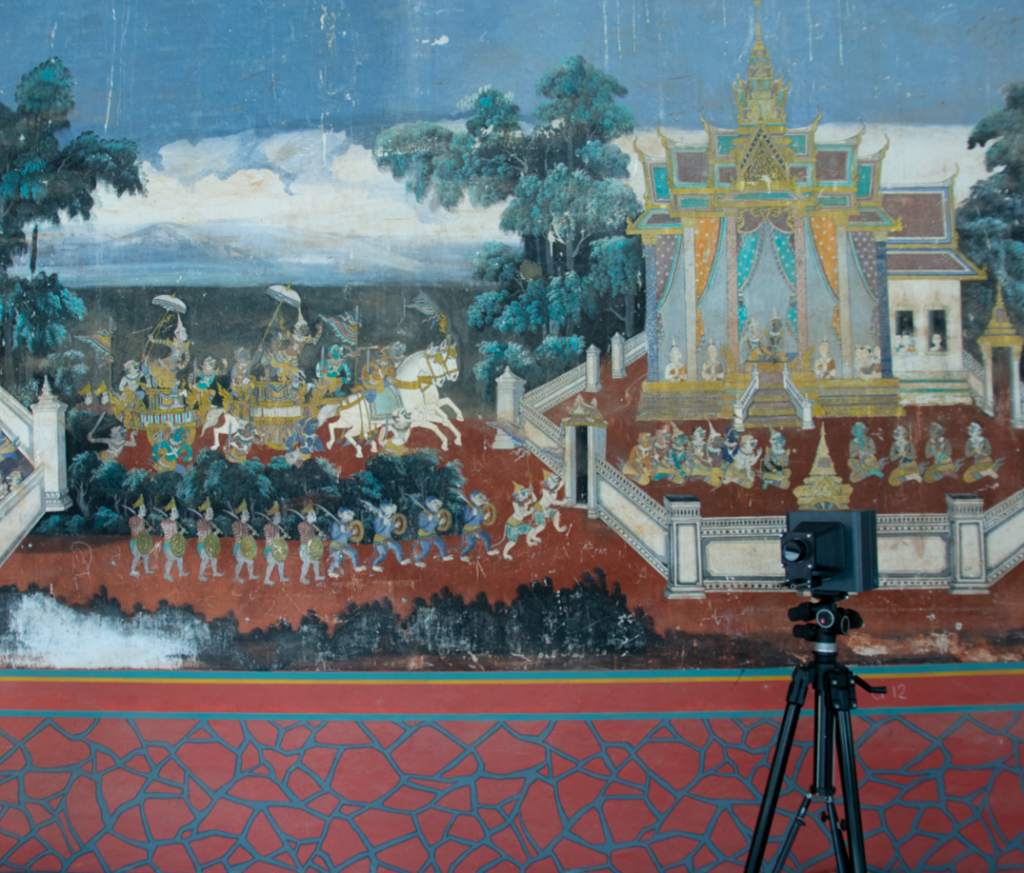
Osiris Camera in situ
Disclaimer: Arcanes are using the recently discontinued Osiris camera in these images. Arcanes own both an Apollo and an Osiris camera, and made the decision to use the Osiris camera for this project due to the time away from their studio in Paris the Apollo would have taken.
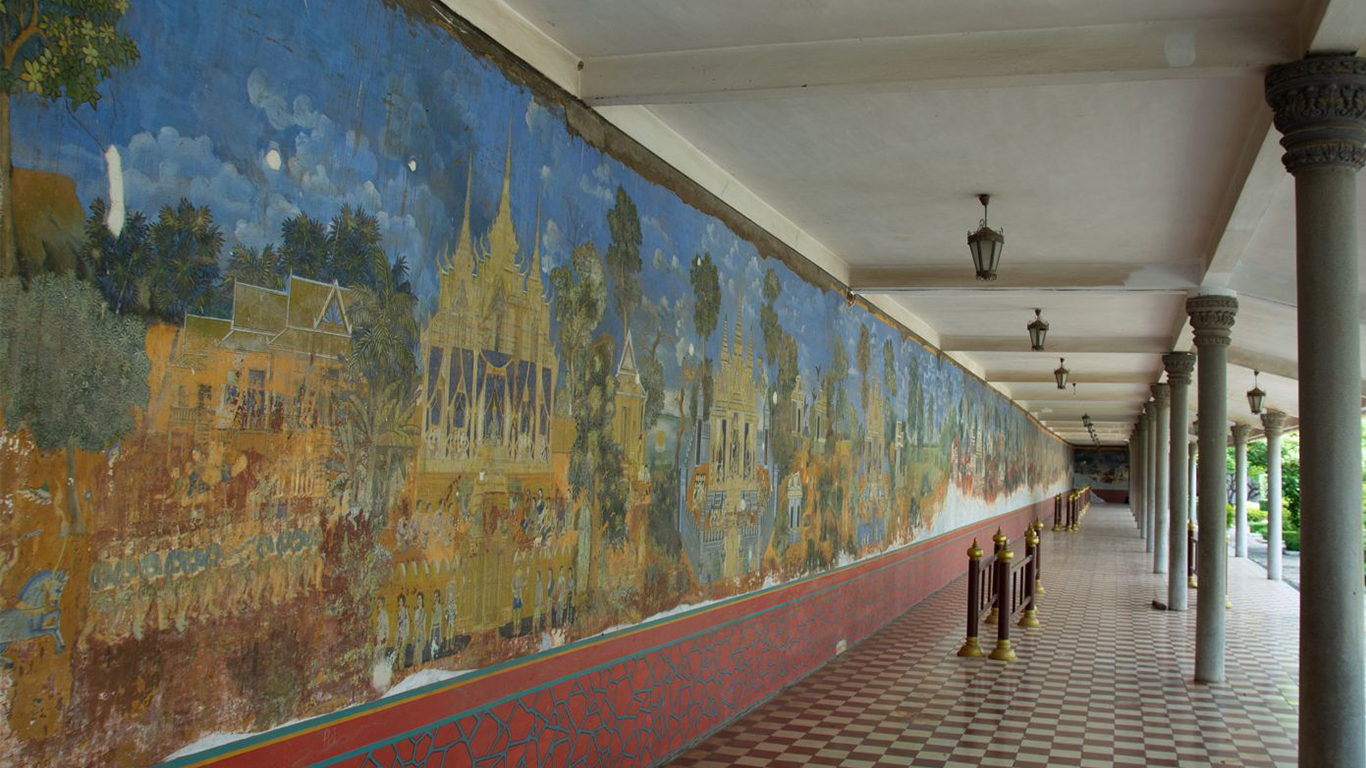
Murals occupying the entire surface of the walls: 3.50 meters high and 604 meters long
Find more art restoration from Arcanes here: https://arcanes.eu/fr/accueil/
For information regarding the Apollo camera and Osiris upgrade offer, please email:
Apollo Camera: https://www.opusinstruments.com/cameras/apollo-camera/